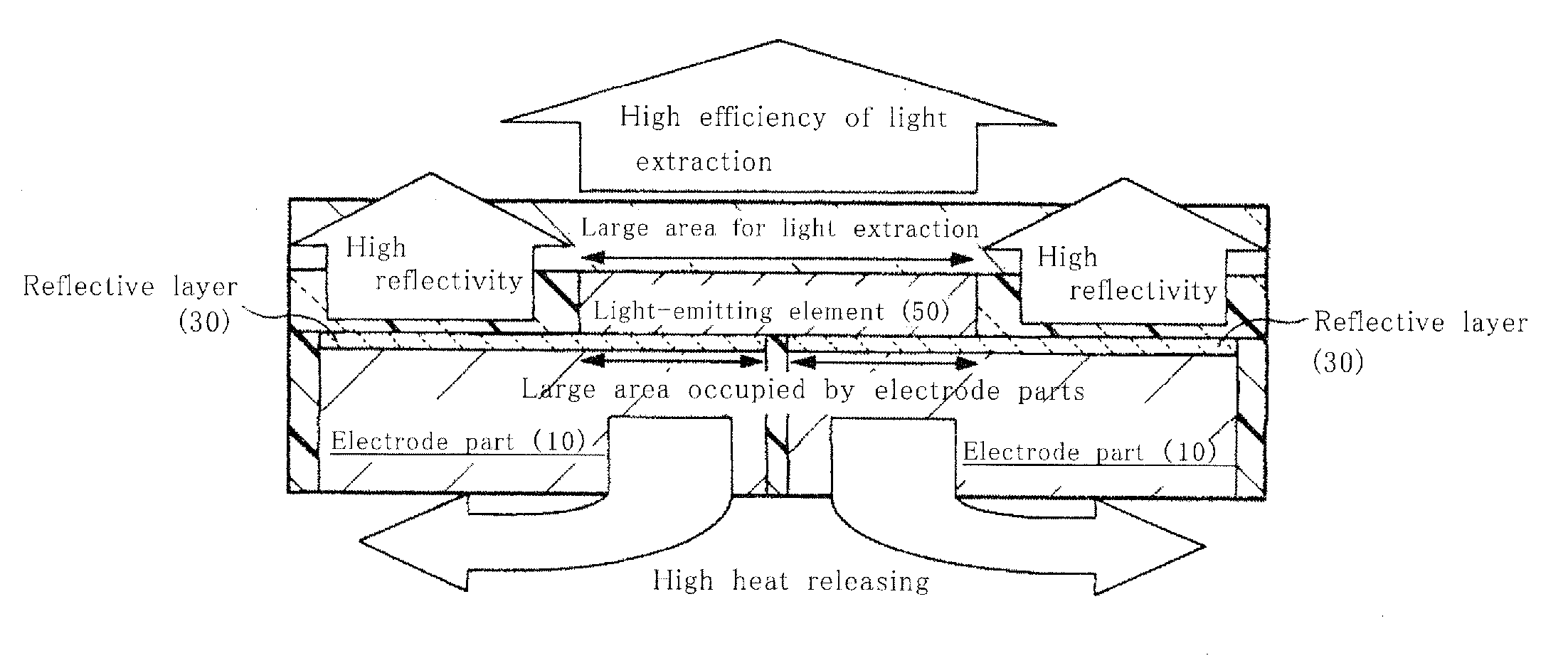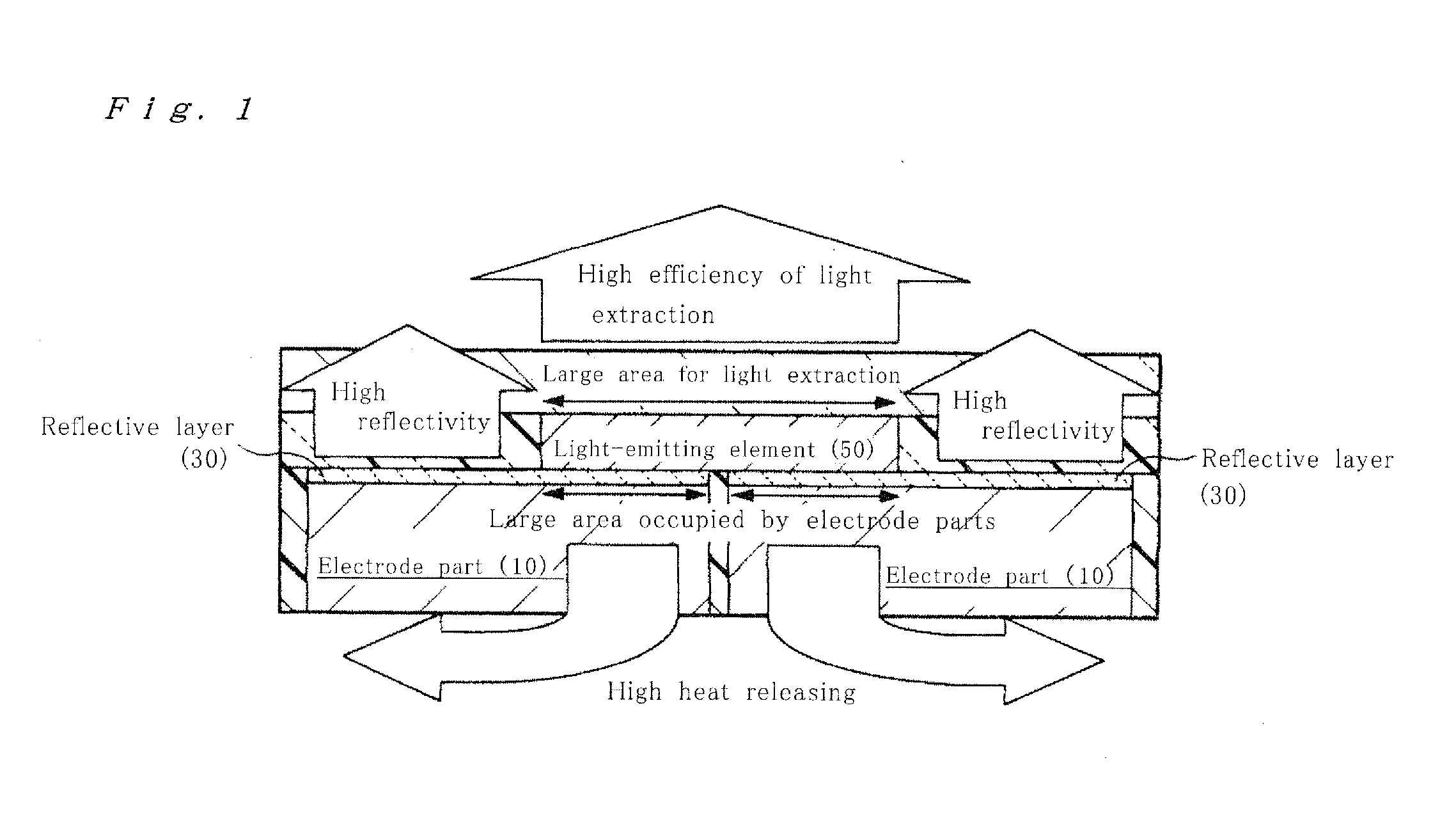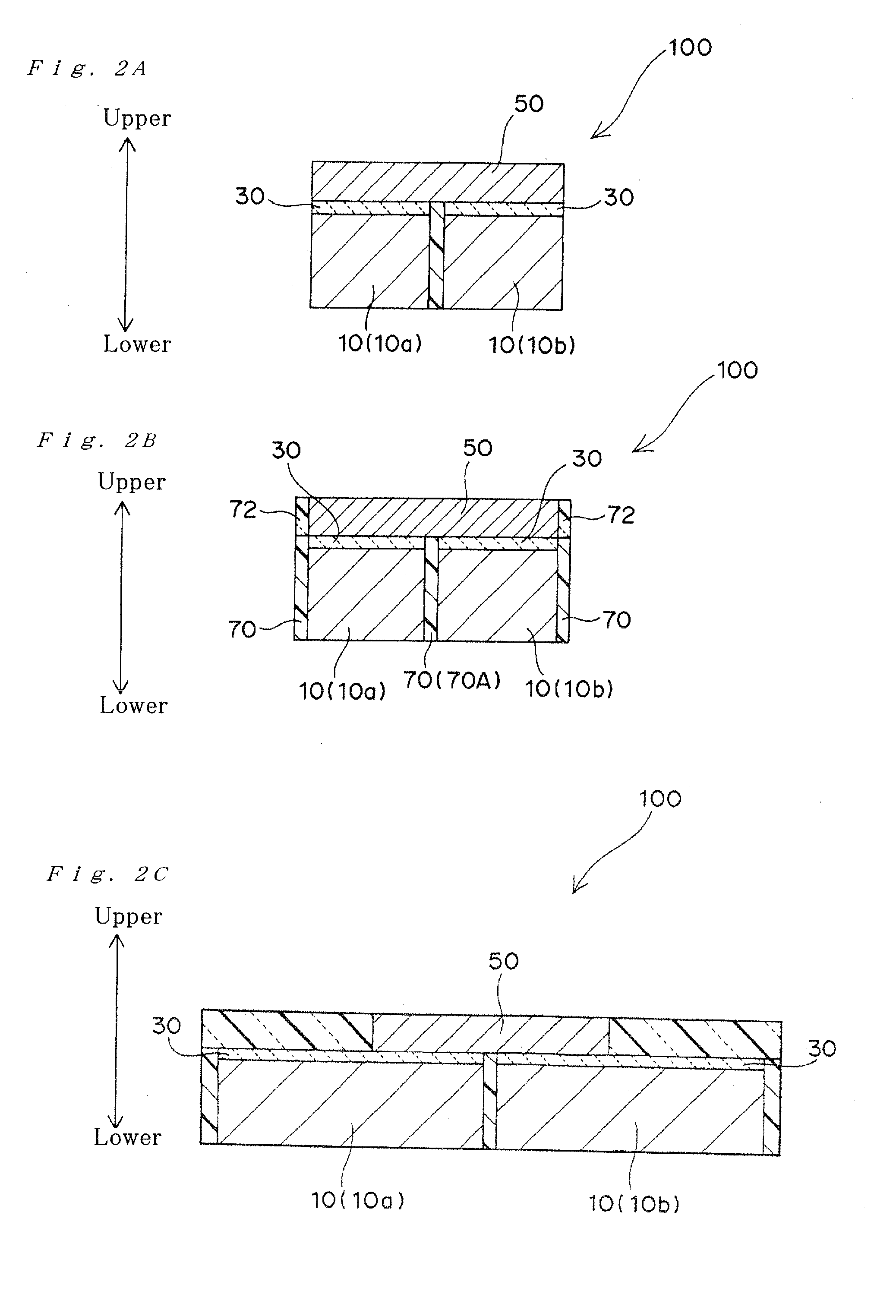Light-emitting device and method for manufacturing the same
a technology of light-emitting devices and manufacturing methods, which is applied in the direction of semiconductor/solid-state device manufacturing, semiconductor devices, electrical devices, etc., can solve the problems of led module and system deterioration, led module and module performance degradation, etc., to increase the amount of extracted light, widen the area, and reduce the effect of heat dissipation
- Summary
- Abstract
- Description
- Claims
- Application Information
AI Technical Summary
Benefits of technology
Problems solved by technology
Method used
Image
Examples
process embodiment 1
[0088]FIGS. 12A-12G illustrate schematic sectional views of the processes according to “Process Embodiment 1”. This embodiment corresponds to the processes for carrying out the manufacturing of the light-emitting device, based on a LED wafer. Firstly, as shown in FIGS. 12A and 12B, a sealing layer 72′ is formed on a principal surface of a LED wafer 50′. The sealing layer 72′ may be formed by applying a raw material onto the principal surface of the LED wafer by a doctor blade process or a spin coating process, followed by a heat treatment thereof. Alternatively, the sealing layer 72′ may also be formed by superimposing a sealing film onto the LED wafer. Then, as shown in FIG. 12C, electrode foundation layer 30 is formed, for example, by a dry plating process (e.g., sputtering process). Then, as shown in FIG. 12D, a sub-electrode part pattern 10′ is formed directly on the LED wafer 50 via the electrode foundation layer 30. The formation of the sub-electrode part pattern 10′ may be pe...
process embodiment 2
[0093]FIGS. 16A-16H illustrate schematic sectional views of the processes according to “Process Embodiment 2”. This embodiment corresponds to the processes for carrying out the manufacturing of the light-emitting device, based on LED chips. Firstly, as shown in FIG. 16A, a plurality of LED chips 50 are disposed on a carrier film 85 with being spaced away from each other. Then, as shown in FIG. 16B, a sealing layer 72′ (in particular, a light-permeability sealing layer) is formed on the carrier film 85, and thereby the LED chips 50 are covered with the sealing layer. Subsequent to the formation of the sealing layer 72′, the career film 85 is removed, and thereby obtaining the LED chips 50 buried in the sealing layer 72′ as shown in FIG. 16C. That is, there can be provided the light-emitting elements with the sealing layer being located at least on the principal surfaces of the light-emitting elements. In particular, the light-emitting elements 50 buried in the sealing layer 72′ is pr...
process embodiment 3
[0097]FIGS. 17A-17G illustrate schematic sectional views of the processes according to “Process Embodiment 3”. This embodiment corresponds to a modification of “Process Embodiment 2”. Firstly, as shown in FIG. 17A, a plurality of LED chips 50 are disposed on a carrier film 85 with being spaced away from each other. Then, an insulating film 72′ (e.g., insulating film made of inorganic material) is formed between the neighboring LED chips 50. As illustrated, the insulating film 72′ is preferably formed such that it is flush with the LED chips 50. The patterning of the insulating layer 72′ can be performed in the above-described manner with respect to “Process Embodiment 1” (see FIGS. 15A(a)-15A(c) or 15B). Subsequent to the patterning of the insulating layer 72′, a phosphor layer 80 is formed on the LED chips 50 and the insulating layer pattern 72′ (see FIG. 17B), and thereafter the carrier film 85 is removed. As a result, there can be provided the light-emitting elements 50 as shown ...
PUM
 Login to View More
Login to View More Abstract
Description
Claims
Application Information
 Login to View More
Login to View More - R&D
- Intellectual Property
- Life Sciences
- Materials
- Tech Scout
- Unparalleled Data Quality
- Higher Quality Content
- 60% Fewer Hallucinations
Browse by: Latest US Patents, China's latest patents, Technical Efficacy Thesaurus, Application Domain, Technology Topic, Popular Technical Reports.
© 2025 PatSnap. All rights reserved.Legal|Privacy policy|Modern Slavery Act Transparency Statement|Sitemap|About US| Contact US: help@patsnap.com



